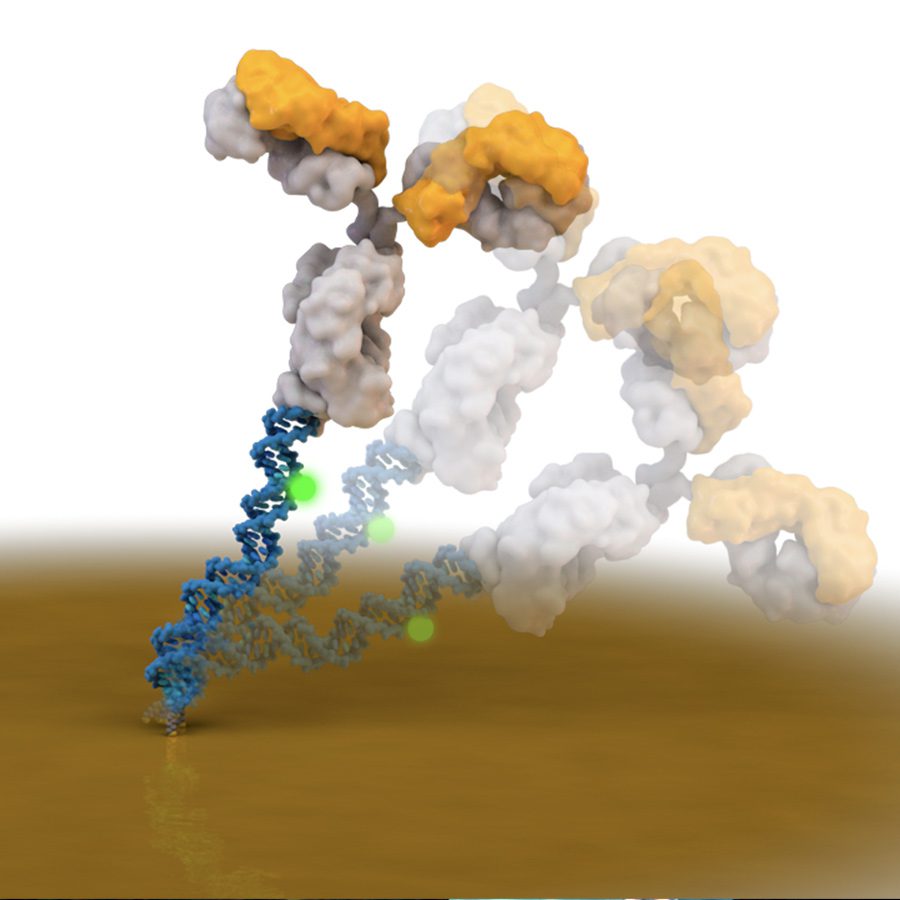Research
Biomolecular Sensors
Development of new tools for biomarker monitoring
The detection of a molecular analytes and use of this type of information for disease diagnosis and physiological monitoring requires methods with high sensitivity and specificity. We are developing new analytical methods with these properties that will permit the direct readout of nucleic acid sequences and protein biomarkers. Chip-based sensors made from nanomaterials play an important role in this effort, as detection sensitivity is greatly enhanced when measurements are performed at the nanoscale. Our aim is to generate detection systems applicable to the diagnosis and management of a variety of disease states, ideally through the development of wearable and implantable sensors for continuous in vivo monitoring.

Molecular Pendulum Sensing
We recently developed a reagent-free sensing approach amenable to continuous monitoring of biomolecular species in vivo. The sensor architecture resembles a molecular pendulum that exhibits diffusional kinetics dependent on the complexation state of an appended antibody.
Featured Publications
“Reagentless Biomolecular Analysis Using a Nanoscale Molecular Pendulum.”
Nature Chemistry, 2021, 14, 428-434.
“Detection of SARS-CoV-2 Viral Particles using Direct, Reagent-Free Electrochemical Sensing.”
Journal of the American Chemical Society, 2021, 143, 1722-1727.

Nanostructured Surfaces for Electrochemical Sensing
Our work has demonstrated that nanostructured sensors yield higher levels of sensitivity and specificity relative to bulk electrode materials. Enhanced probe display and the accessibility of three-dimensional surfaces increase the efficiency of biomolecular complexation reactions.
Featured Publications
"High-Curvature Nanostructuring Enhances Probe Display for Biomolecular Detection."
Nano Letters, 2017, 17, 1289-1295.
"Mechanistic Control of the Growth of Three-Dimensional Gold Sensors."
Journal of Physical Chemistry C, 2016, 120, 21123-21132.
"Ultrasensitive Electrochemical Biomolecular Detection using Nanostructured Microelectrodes."
Acc. Chem. Res., 2014, 47, 2417-2425.
"Programming the Detection Limits of Biosensors through Controlled Nanostructuring."
Nature Nanotechnology, 2009, 4, 844.

Hybrid Sensing Systems
With an eye towards addressing challenging real-world problems, we have developed many different types of sensors that integrate nanostructured materials with versatile reporter systems. Using elements of synthetic biology and enzymatic approaches to biomolecular detection, a variety of unique, high-performance systems were generated.
Featured Publications
“A Multiplexed, Electrochemical Interface for Gene Circuit-Based Sensors.”
Nature Chemistry, 2020, 12, 48-55.
“An Electrochemical Clamp Assay for Direct, Rapid Analysis of Circulating Nucleic Acids in Serum.”
Nature Chemistry, 2015, 7, 569-575.
“Fractal Circuit Sensors Enable Rapid Quantification of Biomarkers for Donor Lung Assessment for Transplantation.”
Science Advances, 2015, 1, e1500417.
"An Ultrasensitive, Universal Detector Based on Neutralizer Displacement."
Nature Chemistry, 2012, 4, 642-648.